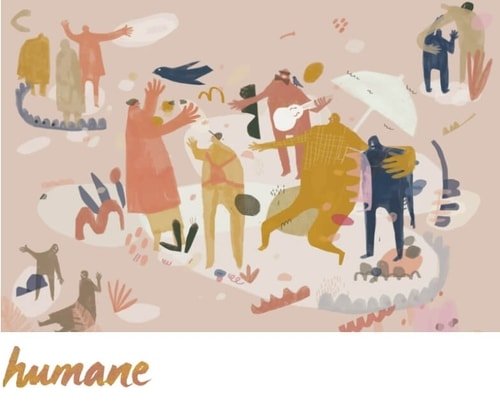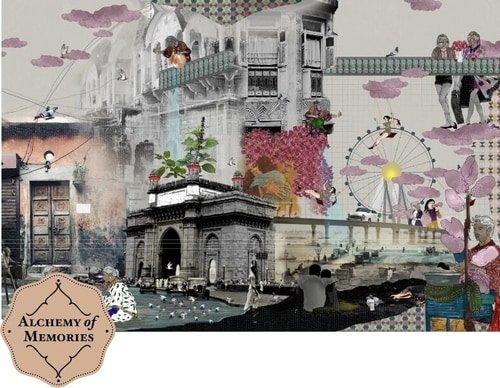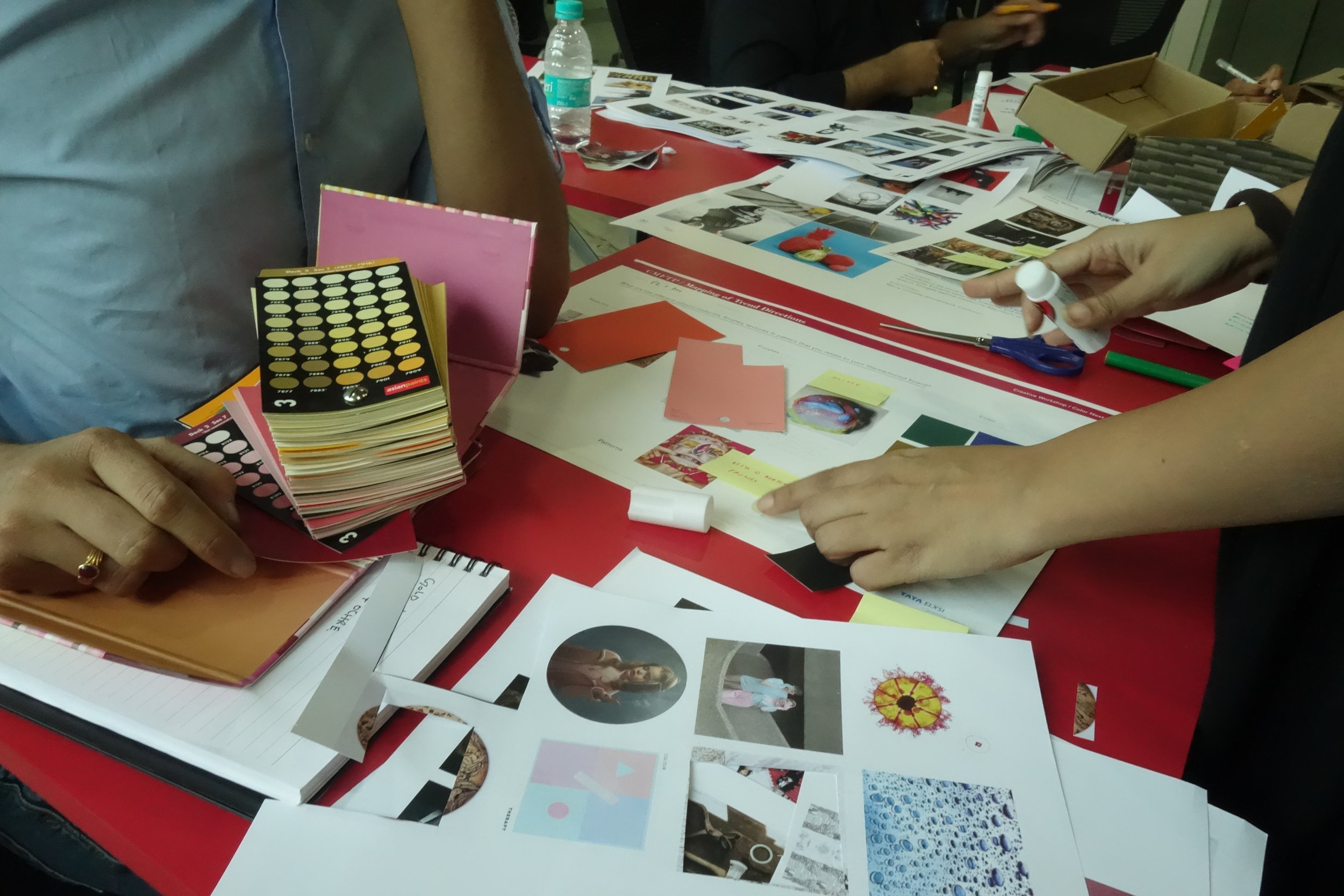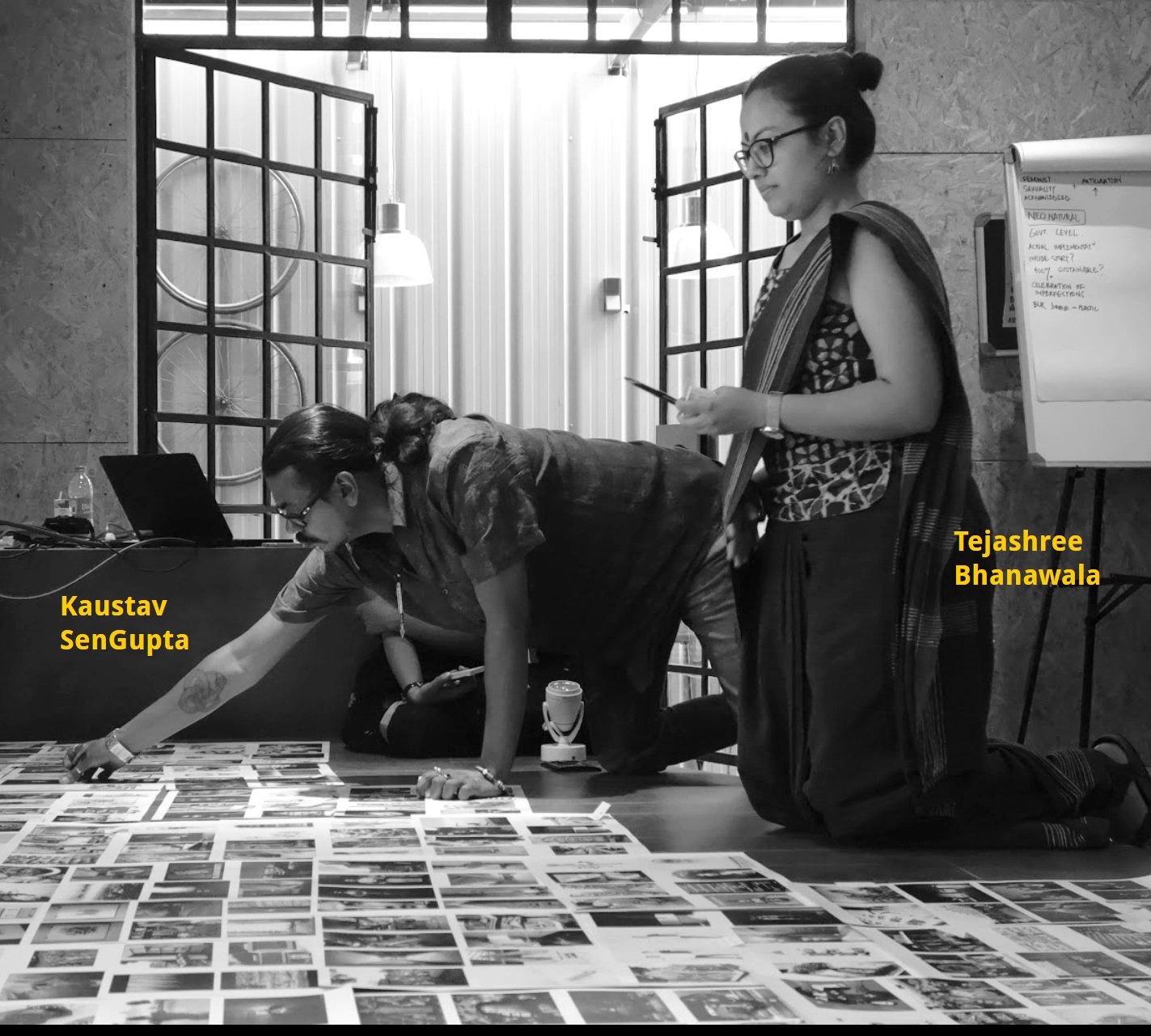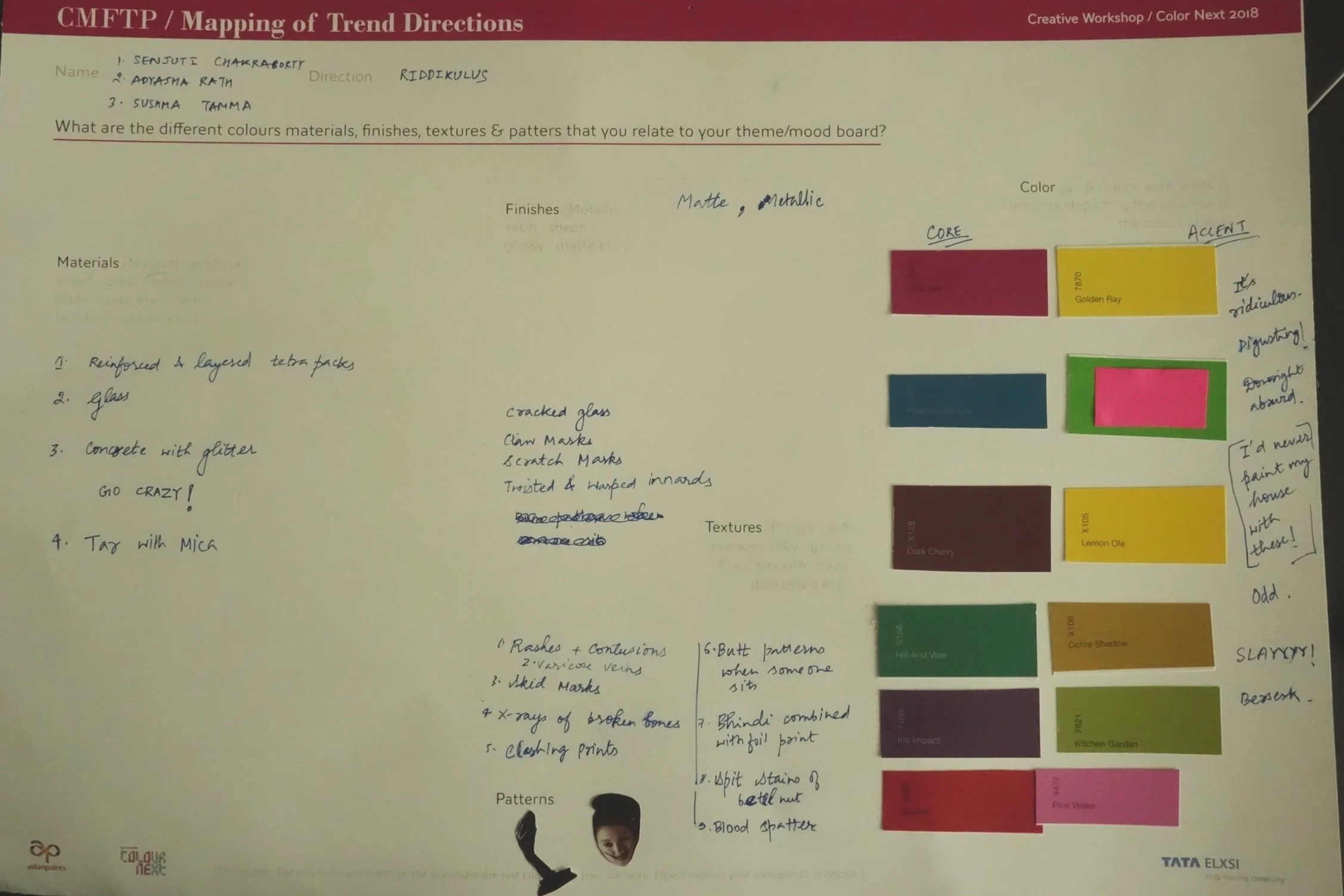Co-Design Research Methods
for Societal and Visual Trends forecasting
ColourNext is an annual color and décor trend forecast commissioned by a leading color and paints company in India.

Background
Colournext, a trends research and forecast project commissioned by Asian Paints, a leading home décor trend forecaster and paint manufacturer in India, aimed to map societal trends in India through an in-depth analysis of consumer behavior and sentiments, consumption patterns, lifestyle shifts, and changes in tastes and preferences across demographics. Using co-design and research methods, collaborative and participatory workshops with experts from different disciplines came together to develop a comprehensive forecast of colors, materials, textures, and finishes for design practitioners in India. The larger goal of the project was to create an annual societal, visual, and color trends repository for Indian design practitioners, containing significant color, design, material, and finish insights.
Project Duration: 8 months
Role: Lead Design Researcher
Design Research Team: 8
Location: Bangalore, Mumbai, New Delhi
Research Process
The research process was divided into three phases: Discovery, Ideation, and Refinement. Phase 1, Discovery, involved pre-field research activities such as a literature review and secondary research focusing on two categories: Societal culture scan and Visual culture scan. Both of these were ongoing activities until the collaborative workshops in Phase 2 of the research process.
The societal culture scan entailed the observation, documentation, and classification of significant social-cultural developments under five predefined broad categories: lifestyle, entertainment, design and innovation, politics, and industry. These data stories, consisting of observations and classifications, were further tagged under a PCET framework, which involved categorizing data points into four subcategories: Persona (demographics) (P), Context (C), Emotions (E), and Triggers (T) to understand the broader context of the data stories according to the emerging themes of a trend direction.
The visual culture scan involved maintaining a visual repository of images under 11 categories such as people and expression, space and architecture, products, packaging, branding, graphics, arts, architecture, entertainment, food and drinks, etc. These were further tagged under a STEM framework, which involved categorizing visual data points into four subcategories: Style and Type (S), Textures, patterns, finish, and materials (T), Emotions and mood (E), and Semiotics and Behavior (M).
Sources included carefully curated lifestyle magazines, leading Indian and international trend magazines, arts and architecture magazines, literary quarterlies like The Paris Review, The New Yorker, Wired, and Harvard Business Review, as well as social media influencers such as photographers, artists, musicians, and stylists.
"Pre-field research activities involved scanning for societal trends from secondary sources and recruiting experts from various domains such as design, literature, entertainment, fashion, and academics. Primary research included focus groups, interviews, and collaborative creative workshops. Open-ended facilitation was designed to gauge current societal sentiments, moods, and discourse on noteworthy social behaviors that could lead to a societal trend direction. This exercise led the research team to build initial 20 societal trend directions and 19 visual mood boards, which were authenticated, substantiated, or invalidated by the experts in a collaborative workshop."
"Ideation involved a series of collaborative and trend development workshops, where our researchers and experts came together to build on societal and visual stories and turn them into trend directions through discourse, which could become heated at times.
The trend development workshops involved the formulation of a trend deconstruction framework, which largely meant deconstructing a trend by tracing its elements and identifying the factors that make it a trend. During this phase of the research, most data stories were ideated into trend directions with visual manifestations, substantiated by both experts and researchers. Often, researchers were seen advocating for particular trends more than others."
Refinement involved a co-creative workshop, as well as color workshops with experts and young design students to gather insights and trend perspectives from a diverse group of participants. It was important to include students who were not experts in a particular domain, but who excelled in thematic development, visual board creation, and mood board creation in relation to trend themes. These were further refined and shortlisted by the researchers into clear trends with visual manifestations that evoked the appropriate mood, reflecting the desired colors, textures, and finishes. Out of the top 7 trends, 4 were selected by the researchers, color experts, and trend experts. These top trends provide unique inspiration and insight for design and lifestyle practitioners in India, spotlighting macro societal and visual trends and manifesting them into design trends with their influence on color, material, and surface finish application across lifestyle design and market-specific sectors for the next 12 months.
On- Field activities
This study included a total of 72 participants in various research activities: 16 participants in focus groups, 10 expert interviews, 16 experts in collaborative and trend development workshops, and 30 design students in a co-creative workshop.
The focus groups were designed to gauge consumer sentiments and societal moods through open-ended, moderated discussions with experts in an informal setting.
Expert interviews were conducted to obtain the experts' personal perspectives on societal and visual culture.
The collaborative workshops aimed to collate data clusters and patterns from secondary resources, and to derive common patterns and insights from the focus groups and interviews in order to shape emerging trend directions.
The trend development workshops focused on determining the visual manifestations of shortlisted trend directions, particularly the use of color to create a mood or evoke a feeling in relation to the trend's theme. The experts came from various industries such as architecture, interior design, food styling, furniture design, photography, fashion styling, graphic design, and textile design. They participated in discussions, ideation, and creative visualization of trends in a co-creative environment.
The creative workshops, which involved 30 design students, included brainstorming, color workshops, and theme selection with visual manifestations from the students' perspective.
The research process was divided into three phases: Discovery, Ideation, and Refinement. Phase 1, Discovery, involved pre-field research activities such as a literature review and secondary research focusing on two categories: Societal culture scan and Visual culture scan. Both of these were ongoing activities until the collaborative workshops in Phase 2 of the research process.
Societal Data Tagging : Persona (P) Context (C) Emotion (E) Triggers (T)
Visual Data Tagging : Style and Type (S) Texture, pattern, material and finish (T) Emotions and Mood (E) Semiotics and Behaviors (M)
The Trend Deconstruction Framework was devised to deconstruct a trend direction by tracing its elements to a macro trend, micro trends, and the factors causing social-cultural behavioral shifts. Deconstruction largely extrapolated the origin of an emerging trend, evaluating the factors that make it a trend, the affected demographics, their desires, emotions, and triggers, and their forecasted needs.
For this study, the method heavily relied on the researchers' ability to perceive variables and relationships, which ground theorists refer to as "theoretical sensitivity." This is influenced by various factors including the researchers' reading of the literature, observations, use of techniques designed to enhance sensitivity, and personal (trend researcher’s) ideas to acquire and develop their theoretical sensitivity.
After the creative visual workshop, the data received was categorized and analyzed in order to identify stronger visual interpretations. Some of the trends had unconventional and unique interpretations and visual manifestations. The analysis resulted in 7 strong trend themes. The visual grammar for each of these trends was redefined, and the new language was used to create mood boards for each trend, which helped to further develop the trends visually. With the final round of voting, we arrived at top 4 trends.
Trend Deconstruction Framework
Trend Deconstruction example : ‘Ungender’ trend
Discovery process graphic
Ideation process graphic
Refinement process graphic
Trend Analysis
Trend analysis and interpretation was based on flexible methodological strategies, heavily influenced by participatory design methods and grounded theory. We created a textual and visual database to label variables such as categories, concepts, and themes in order to evaluate their relationships. We used coding to map data points and discover emerging patterns. We referred to this process as "tagging" for the purpose of this study. This was essential for emotional wheel mapping and relational mapping of an emerging trend.
Outcome
Humane
The world has been in unrest, and there has been a significant loss of humane values, leading to self-seeking attitudes and behavior among individuals. The tech-saturated world has made us more narcissistic, living in our own cocoons. This has weakened human connections and depleted emotional ties within individuals, making humanity more fragile.Today, we are rendered vulnerable, triggering the primal need to reach out and connect with each other in order to build essential humane connections. From a warm handshake to a sympathetic hug, we seek the nonverbal language of touch, manifesting through emotional expressions and haptic experiences.
The trend will enable a shift from apathy and indifference to humane values of empathy and trust. We will seek more human interaction, building on a sense of community and the softer aspects of being human. We are currently missing out on connecting with the larger ecosystem of being humane. This desire will lead people to consciously acknowledge the world, which is multi-sensorial and emotionally layered. This will manifest in haptic interactions, tangible conversations, and supporting the human collective.
2. Riddikulus
The portrayal irrational behavior by influential celebrity icons, political and business leaders propels them to the limelight, making their presence common in everyday conversations.
This irrationality is getting translated into popular culture, inspiring similar absurd behavior and dynamic expressions among certain audiences who feel the need to be heard.
Riddikulus ( later renamed as Untamed) as a trend will manifest itself in popular culture as a tool of communication and a medium of expression. We will see the mass accepting absurdity as a legitimate language of interaction to highlight social issues or bring attention to a cause making it an acceptable norm and accommodative in our everyday lives. This over-the-top behaviour will gain popularity not just as an attention seeking behaviour but to stir reaction in society.
3. Busy Cool
We seek constant validation from society, where our relevance and social status are defined by conventional tangibles such as a high-profile job, good remuneration, expensive holidays, and access to luxury. With social media, it has become imperative to showcase one's achievements and possessions.
The individual has become a scarce resource, and validation now involves the act of portraying an exaggerated picture of an enviable self to others. This has led to the staging of a lifestyle where attempts are being made to be perceived as busy. Across demographics, the sense of fulfillment is found in the chaos of moving at a fast pace, juggling multiple tasks, and focusing on more important tasks as opposed to time spent on daily mundane activities.
This trend will enable a shift in the definition of affluence, where being busy is recognized as a new mark of success. Industries and marketers will target consumers, flattering them by implying how valuable their time is. Rising trust in technology will enable the innovation of products and services that will assist in the auto-maintenance of social personas and propel the projection of their lifestyle in order to facilitate humblebragging.
4. Alchemy of Memories
We are a future-oriented race. The direction of living is to move forward with a brutal, uncompromising march to develop and modernize. The past deserves a place in the present, as it holds a memory that signifies who we are as a race or community.
Today, we have moved away from this maddening march. It is time to take a pause and reflect back to see the journey we have traversed. This introspection acknowledges the people, places, relationships, and relevant events from the past that contribute to our being today. There is a deeper realization that we owe our privileged life today to the sacrifices and efforts someone made in the past.
This trend will help to unlock the DNA of our cultural memories and learn from the past to build a better future. We will create crucibles of memory - icons as reminders, documents as historical guides. People, art institutions, and organizations will focus on documenting memories. Efforts will be taken to treasure these memories to ensure they are not lost over time and allow people to access and experience them.














